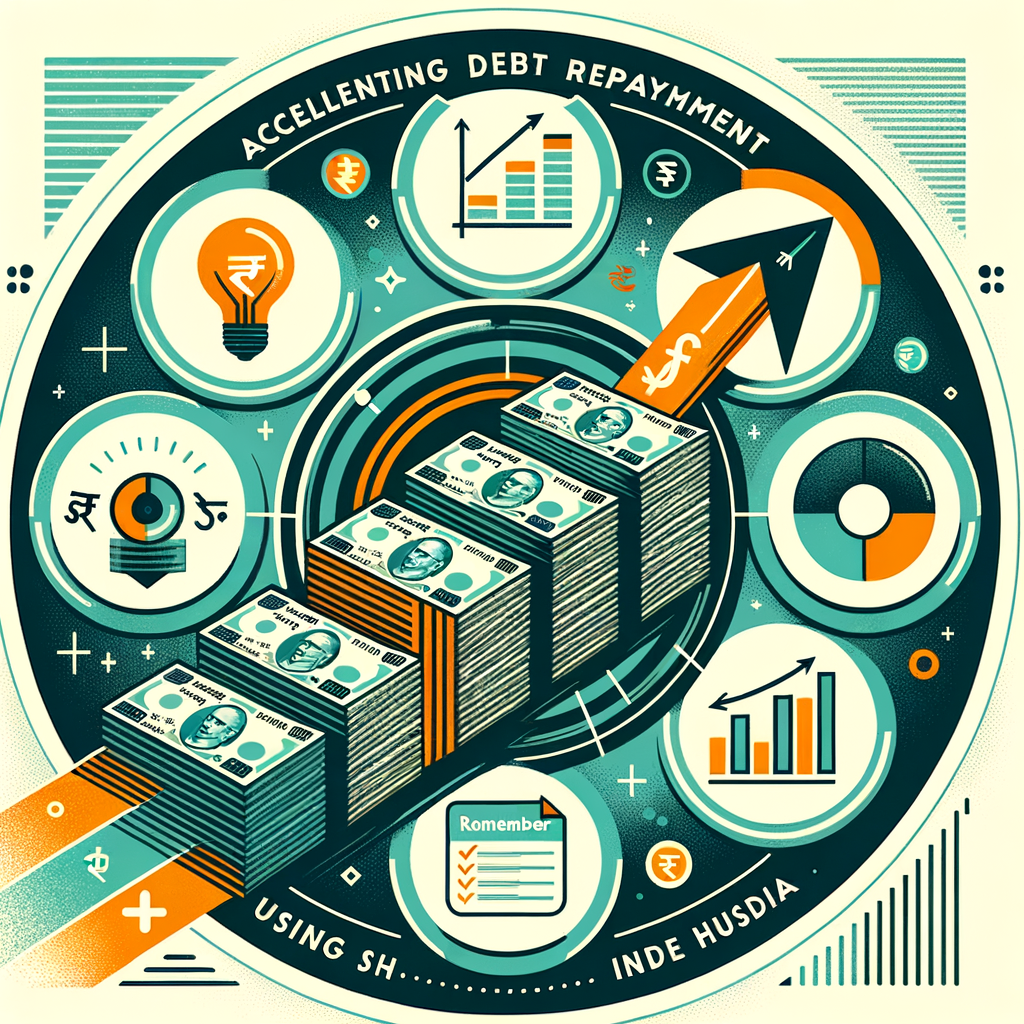Using Side Hustles to Accelerate Your Debt Repayment: An Indian Guide
In today’s economic climate, the rising cost of living, mounting EMIs for homes and cars, and persistent credit card bills can make the dream of becoming debt-free seem distant for many Indians. Juggling these financial obligations often leaves little room for savings or investments, creating a cycle of financial stress. However, there’s a powerful strategy that is helping thousands take back control: using side hustles to accelerate debt repayment. Earning extra income is no longer just a trend but a practical and effective way to dismantle your debts faster. This comprehensive guide will walk you through the entire process, from finding the right gig to creating a solid repayment plan and, crucially, managing the tax implications in India. Whether you’re a salaried professional looking to supplement your income or a small business owner aiming to create new revenue streams, these strategies can help you reach your financial goals faster.
Why You Should Consider Using Side Hustles to Accelerate Debt Repayment
Starting a side hustle specifically to pay off debt is more than just about making extra money; it’s a strategic move to secure your financial future. The benefits extend beyond the immediate financial relief, creating a more resilient and empowered financial life. By dedicating a new income stream entirely to your liabilities, you can make significant progress that would otherwise take years. This proactive approach not only shortens your debt’s lifespan but also transforms your relationship with money, shifting from a position of anxiety to one of control and confidence.
The Compounding Power of Extra Payments
The most significant advantage of a side hustle is the ability to make extra payments on your loans, which can have a massive impact over time. Even an additional ₹5,000 – ₹10,000 per month can drastically reduce your loan principal, saving you a substantial amount in interest over the loan’s tenure. This extra cash flow supercharges popular debt repayment strategies. For instance, with the “debt snowball” method, you pay off your smallest debts first to gain psychological momentum. A side hustle provides the extra funds to knock out those small loans quickly, motivating you to tackle bigger ones. Alternatively, with the “debt avalanche” method, you target the debt with the highest interest rate first. This approach saves you the most money in the long run, and a dedicated side income allows you to make aggressive extra payments on that high-interest loan, significantly reducing the total interest paid. Choosing between them is a key decision, and understanding Debt Snowball vs. Debt Avalanche: Which Strategy Is Best for You? is a great starting point.
Building Financial Resilience Beyond Your Primary Income
Relying on a single source of income can be risky, especially in an uncertain job market. A side hustle creates a crucial second income stream, providing a safety net against unexpected events like a job loss, a medical emergency, or a major home repair. This financial cushion is invaluable when you’re focused on paying off debt, as it reduces the likelihood of having to take on new debt to cover unforeseen expenses. Instead of derailing your progress, you can handle emergencies without disrupting your primary budget or debt repayment plan. This diversification of income builds long-term financial resilience and security, making your financial foundation much stronger.
Gaining Control and Reducing Financial Stress
Debt can be a significant source of mental and emotional stress, often making you feel trapped and powerless. The act of starting a side hustle is an empowering step towards regaining control over your financial destiny. Instead of passively waiting for your salary to chip away at your debts, you are actively creating a solution. This proactive approach has a profound psychological benefit, reducing the anxiety and helplessness associated with being in debt. Watching your loan balances decrease faster than you thought possible provides a tangible sense of accomplishment and reinforces positive financial habits, setting you on a path to lasting financial freedom.
Identifying Effective Side Hustles for Debt Repayment in India
The key to a successful side hustle is finding something that aligns with your skills, resources, and schedule. India’s burgeoning digital economy offers a plethora of opportunities for both salaried professionals and small business owners. The goal is to find a gig that can generate consistent extra income without causing burnout. Here are some of the most effective side hustles for debt repayment in India.
For Salaried Professionals: Monetize Your Skills
If you have a full-time job, the most efficient way to earn extra money is by leveraging the professional skills you already possess. This approach requires minimal training and allows you to charge a premium for your expertise.
- Content Writing/Editing: If you have a flair for writing, many businesses need writers for blogs, website copy, and marketing materials. Platforms like Pepper Content, Upwork, and Internshala regularly list freelance writing and editing gigs.
- IT & Tech Skills: Professionals with skills in coding, web development, app development, or UI/UX design are in high demand. Websites like Fiverr and Upwork are excellent places to find freelance projects from clients around the world.
- Online Tutoring/Coaching: You can teach academic subjects to students or offer professional coaching in areas like public speaking, digital marketing, or interview preparation. Platforms like Vedantu and UrbanPro connect tutors with students across India.
- Virtual Assistant (VA): Many busy entrepreneurs and small businesses need help managing administrative tasks like scheduling, email management, customer service, and social media updates. This is a flexible, remote-friendly side hustle.
For Small Business Owners: Expand Your Service Offerings
As a small business owner, you already have the infrastructure, expertise, and entrepreneurial mindset to create new revenue streams. Think about how you can package your existing knowledge or services in a new way.
- Consulting/Workshops: Offer paid workshops or one-on-one consulting sessions in your area of expertise. For example, a digital marketing agency owner could host a workshop on “Social Media Basics for Startups,” or an accountant could offer consulting on financial management.
- Digital Product Creation: Turn your knowledge into a sellable digital product. This could be an e-book, a set of industry-specific templates (like social media calendars or financial spreadsheets), or a pre-recorded online course. This creates a source of passive income once the initial work is done.
- Affiliate Marketing: If you regularly recommend certain software, tools, or products in your business, check if they have an affiliate program. You can earn a commission for every sale made through your unique referral link by promoting it on your blog or social media.
Low-Investment Gigs for Everyone
You don’t need a professional skill or an existing business to start earning extra money. Many side hustles require little to no upfront investment and can be started immediately.
- Selling on Social Commerce: Use platforms like Instagram, Facebook Marketplace, or OLX to sell products. This could be handmade crafts, baked goods, art prints, or even thrifted clothing and home decor.
- Delivery Partner: The gig economy offers immense flexibility. You can sign up as a delivery partner for companies like Zomato, Swiggy, Dunzo, or Porter and work during your free hours to earn extra cash.
- Renting Assets: Monetize things you already own. You can rent out a spare room on Airbnb, your car on Zoomcar, or even specialized equipment like cameras or tools on local rental platforms.
Your Action Plan: How to Accelerate Debt Repayment with Side Hustles in India
Earning extra money is only half the battle. To truly make a dent in your debt, you need a disciplined and strategic plan. Without a clear system, that hard-earned side income can easily get absorbed into your regular spending. Follow these steps to ensure every extra rupee works towards your goal of financial freedom.
Step 1: Audit and Prioritize Your Debts
Before you can attack your debt, you need a clear picture of what you owe. Take the time to list out all your liabilities, including credit card bills, personal loans, student loans, and vehicle loans. For each debt, create a table or spreadsheet noting the following details:
| Debt Type | Outstanding Principal (₹) | Interest Rate (% p.a.) | Minimum Monthly Payment (₹) |
|---|---|---|---|
| Credit Card 1 | 50,000 | 36% | 2,500 |
| Personal Loan | 2,00,000 | 14% | 10,000 |
| Car Loan | 4,50,000 | 9% | 15,000 |
Once you have this overview, choose your repayment strategy. The “avalanche” method (targeting the 36% credit card first) will save you the most money, while the “snowball” method (also targeting the smallest ₹50,000 debt) will give you a quick win and build momentum.
Step 2: Earmark Every Rupee
This is the most critical step. To avoid temptation, you must mentally and physically separate your side hustle income from your primary earnings. Open a new, separate bank account dedicated solely to your side hustle. All payments you receive from your side gigs should go directly into this account. Then, create a simple but non-negotiable rule for this money. For example, decide that 90% of all income in this account will go directly towards debt prepayment, while the remaining 10% is set aside for taxes and business-related expenses. This separation prevents lifestyle inflation and ensures your extra effort translates into real progress.
Step 3: Automate and Track
Discipline is easier when it’s automated. Once your side hustle starts generating a consistent income, set up an automatic transfer (or standing instruction) from your side hustle bank account to the loan account you are targeting. Schedule this transfer for a day or two after you typically receive your side income. This “pay yourself first” approach to debt repayment removes the need for willpower. Additionally, use a simple spreadsheet or a budgeting app to track your progress. Seeing the principal balance drop faster than scheduled is incredibly motivating and reinforces your commitment. This is one of the most important tips for using side hustles to pay off debt India.
Tax and Legal Compliance for Your Side Hustle Income in India
As you start earning from your side hustle, it’s crucial to understand your tax and legal obligations. Ignoring compliance can lead to penalties and legal issues down the line, erasing all your hard work. Positioning your hustle on a strong legal footing from day one is essential for long-term success and peace of mind.
Is Your Side Hustle Income Taxable?
The answer is a clear yes. Under the Indian Income Tax Act, 1961, any income you earn, whether from a full-time job or a side hustle, is taxable. You must declare this additional income when filing your annual income tax return. Our detailed guide on Filing Tax Returns for Freelancers and Consultants provides a step-by-step process. Depending on the nature of your work, this income can be classified under “Income from Business or Profession” (for freelancers, consultants, or sellers) or “Income from Other Sources” (for one-off gigs or rental income). For eligible freelancers and small businesses, the government offers a simplified Presumptive Taxation Scheme. You can learn more about Section 44ADA: Presumptive Taxation for Professionals to see if you qualify. This allows you to declare a percentage of your total receipts as your income (e.g., 50% for specified professionals under 44ADA) without needing to maintain detailed account books.
Filing Your Income Tax Return (ITR)
Once you have income from a side hustle, you can no longer use the simple ITR-1 form meant for salaried individuals. You will need to file a different form to declare your business or professional income.
- ITR-3: This form is for individuals who have income from a business or profession and need to maintain detailed books of accounts.
- ITR-4 (Sugam): This is a simpler form for those who opt for the Presumptive Taxation Scheme under Sections 44AD, 44ADA, or 44AE.
It is crucial to choose and file the correct ITR form to remain compliant. For more detailed information, you can always visit the official Income Tax Department e-filing portal.
GST Registration: When Is It Required?
Goods and Services Tax (GST) is an indirect tax that may apply to your side hustle. Registration for GST is mandatory only after your annual turnover crosses a certain threshold. In India, these thresholds are:
- For Services: Your aggregate turnover exceeds ₹20 Lakhs in a financial year.
- For Goods: Your aggregate turnover exceeds ₹40 Lakhs in a financial year.
Important Note: If you are selling goods through an e-commerce platform like Amazon or Flipkart, you are required to register for GST from day one, regardless of your turnover. You can get more information and register on the official GST Portal.
Pro Tip: Maintain Records and Claim Expenses
Even if you opt for the Presumptive Scheme, it’s a good practice to maintain basic records of your income and expenses. If you are filing ITR-3, this is mandatory. Keep track of all expenses directly related to your side hustle, such as internet bills, software subscriptions, raw material costs, marketing expenses, and courier charges. These expenses can be deducted from your gross income, which helps lower your total taxable income and reduces your tax liability. For a deeper understanding of what to track, read our guide on how to Set Up An Accounting System for My Small Business.
Conclusion
Embarking on a journey of using side hustles to accelerate debt repayment is one of the most empowering financial decisions you can make. It transforms you from a passive debtor into an active architect of your financial future. The key takeaways are simple yet powerful: a side hustle provides a dedicated income stream to attack your debt, a disciplined plan is essential to channel that income effectively, and managing your tax and legal compliance is non-negotiable for sustainable success. With the right strategy and consistent effort, you can leverage side hustles for debt repayment in India and achieve financial freedom much sooner than you thought possible, building a more secure and prosperous future for yourself.
Feeling overwhelmed by the tax and compliance side of your new hustle? Let the experts at TaxRobo handle it for you. From GST registration to ITR filing, we ensure you’re 100% compliant. Contact us today for a consultation!
FAQs on Using Side Hustles to Pay Off Debt in India
Q1: How much of my side hustle income should I put towards debt?
A: While it depends on your financial situation, a good rule of thumb is to allocate at least 80% of your net side hustle earnings (after accounting for business expenses) directly to debt. The other 20% can be set aside for taxes, reinvestment into the hustle, or a small personal reward to stay motivated and avoid burnout.
Q2: Do I need a separate business registration for my side hustle?
A: For most freelancers, consultants, and small-scale side hustles in India, operating as a sole proprietor is sufficient and does not require a separate business registration. Your PAN will serve as your business identifier. However, you will need to obtain GST registration if your turnover crosses the specified threshold or if you sell goods on e-commerce platforms.
Q3: Can I run a side hustle while having a full-time job in India?
A: Legally, yes, you are allowed to have other sources of income. However, you must carefully review your employment contract. Many companies have “conflict of interest” or “exclusive employment” clauses that may restrict you from engaging in other work, especially if it’s in a similar industry or uses company resources. It is always best to pursue a side hustle that is unrelated to your employer’s business.
Q4: What happens if I don’t declare my side hustle income to the tax authorities?
A: Not declaring any income is illegal and considered tax evasion. If discovered by the Income Tax Department, it can lead to serious consequences. These include heavy penalties on the undeclared income, interest on the unpaid tax amount, and in severe cases, legal prosecution. It is always better and safer to be fully compliant.
Q5: What are the best low-cost marketing tips for a new side hustle?
A: You don’t need a large budget to market your new side hustle. Leverage the power of social media by creating profiles on relevant platforms like Instagram or LinkedIn. Set up a free Google Business Profile to appear in local searches. Encourage word-of-mouth marketing by asking satisfied clients for referrals and testimonials. You can also join relevant online communities on Facebook, Reddit, or LinkedIn to offer value, answer questions, and showcase your expertise without directly advertising.



